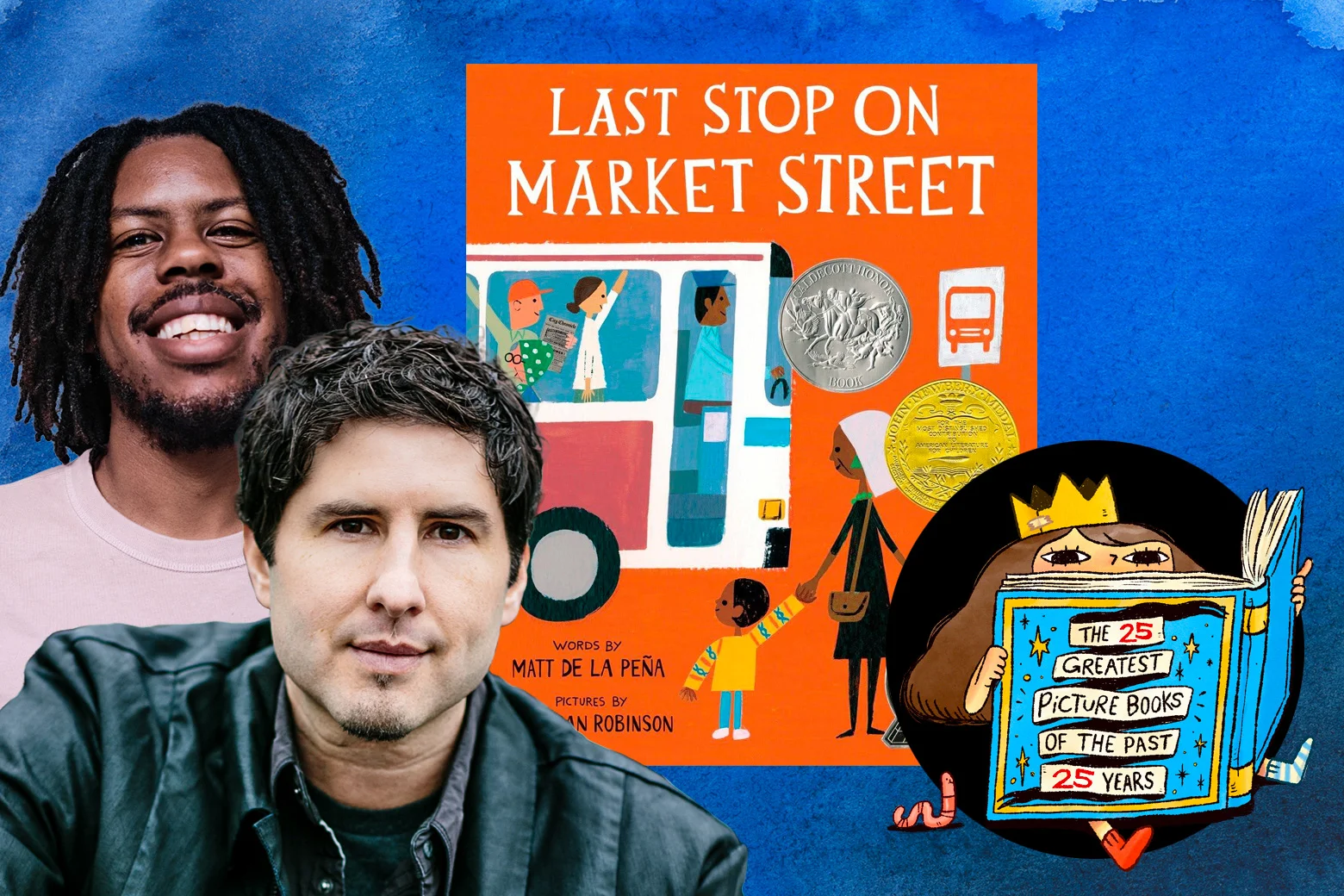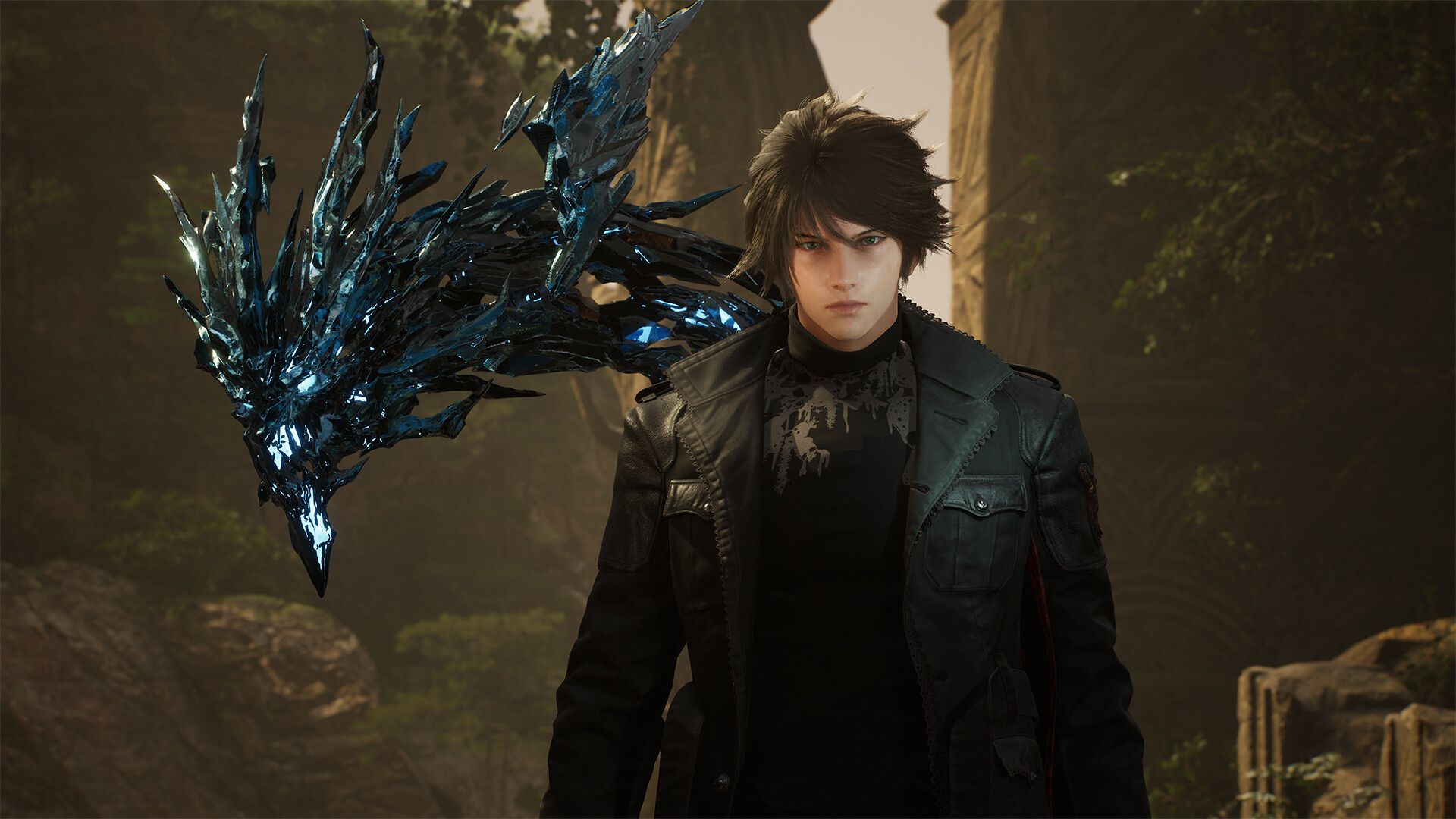
Read all of Slate’s stories about the 25 Greatest Picture Books of the Past 25 Years.
Last Stop on Market Street garnered the most total votes from librarians, booksellers, and picture-book professionals among all the titles on Slate’s list of the 25 best picture books of the past 25 years. This simple story of a little boy who wishes he had more, and the grandmother who reminds him of the riches already in his life, won the Newbery and Caldecott awards for 2015. Last Stop on Market Street served notice to the publishing world that other kinds of stories, featuring working-class characters in working-class circumstances, could garner acclaim, climb the bestseller list, and connect with kids and educators in all walks of life.
Written by Matt de la Peña and illustrated by Christian Robinson, who were both at the very beginnings of their picture-book careers at the time, Market Street follows young CJ and his grandmother as they take the bus after church. While for most of the book, CJ is pestering his grandmother about the things they don’t have, the book’s centerpiece is a moment of peace and beauty: At his grandmother’s urging, CJ closes his eyes to listen to a man playing guitar on the bus; Robinson portrays CJ in close-up, with the busy urban background replaced by simple shapes, bright colors, and animals in flight. I asked de la Peña and Robinson how this lovely spread came to be. Our conversation has been condensed and edited for clarity.
Matt de la Peña: I’m going to lay out my argument for this page.
Christian Robinson: Sure.
de la Peña: I have to spend the majority of my time as a storyteller sinking into the background, just facilitating story. But there are moments in every project where you get to step forward and—OK, I gotta do the basketball analogy—it’s a little bit more of a highlight. You get to do your thing.
Dan Kois: It’s your SportsCenter Top 10 moment.
de la Peña: Yeah, it’s the buzz clip. So in this story, we have this formula that’s moving us through: CJ mentions something he wants or doesn’t have, and his grandmother redirects his attention to something he should already be thankful for. But then in this moment, when he closes his eyes and listens to the guitar, this was an opportunity to enter a new part of the story.
And I’ll even tell you, my editor gave me a note on this page. “You repeat the word sound. Maybe take one out.” I remember I got very dramatic and I said, “I could take one of those sounds out, but if I do, do you promise not to put my name on the book?” She’s like, “Whoa.”
“I just wanted to have a conversation, Matt.”
de la Peña: Very dramatic. And then I made an argument for this second sound, because I feel like he’s in a dream space here. “CJ’s chest grew full and he was lost in the sound / and the sound gave him the feeling of magic.” I felt like I earned taking that one extra beat to do something rhythmic.
You’ve earned that one last dribble through the legs before you go up for the dunk.
de la Peña: That’s exactly it.
Christian, when you see this text, what is your immediate thought about how this is going to transform what you want to do with the visuals?
Robinson: This is probably the one scene in the book where Matt does something that he doesn’t do often: He’s telling me what to put into the image.
Oh yeah. Because of all the he saws.
de la Peña: Oh, that’s true. I hadn’t realized that.
Robinson: But I love what Matt did here. It’s poetry. So it being poetry, I still felt a sense of freedom that I could interpret things just how I wanted. I still got to do my thing. I was thinking about music, I was thinking about jazz, and I was thinking about flight. There’s so much mention of this music transporting him, lifting him up. And so I thought of those butterflies. I thought of those hawks.
de la Peña: There’s this line: “Sometimes the rhyme is smarter than the poet.” Sometimes confinements make you go in a new direction. You have to come up with that rhyme, and it makes you think of an idea that you never would’ve got to if you didn’t have that confinement. Christian, if you felt the need to include some of these details that the text has, did you then have to find another way to do your thing?
Robinson: Yeah. Yeah.
You have to fulfill certain requirements, but you are then inspired to find: “All right, well, what of me can I add to this?”
Robinson: Yeah. I do remember being intimidated by the spread at first. I’m like, Wait, I got to just draw tie-dye, swirling waves, and this is not my thing at all. And so how do I make it my thing? I remember looking to modern art—Miró, Calder.
Matt, you said this is the place where CJ’s in close-up, for you as a writer. And this is also the only page in the book, Christian, where you’ve drawn CJ really filling up a lot of space. Usually he’s small in the picture, surrounded by everything that’s going on around him in the bus or in the city or in the soup kitchen. Did you stress, Matt, “This is a close-up of him,” or is that something, Christian, that you came to on your own?
Robinson: I knew that I wanted to have a visual break. This feels very much internal, and so it made sense to draw the viewer in closer to him.
de la Peña: Working with Christian, there’s never any discussion about any particular art strategies. Every once in a while, Christian will send me a short text and it’ll ask a quick question. And of course, I’m just so hungry for it, I’m so excited, I’ll write him a seven-paragraph essay back, and then he’ll write back, “K.”
Is that unusual? Is the writer generally more involved in the art decisions?
de la Peña: Lately, everybody wants to have these big long conversations! But Christian just goes off on his own and I get to be surprised by the results.
Robinson: Oftentimes, it feels like the publisher likes to keep some distance between the author and the illustrator. I communicate directly with the art director of the book. On this book, that was Cecilia Yung. We’re in conversation trying to figure out the visuals. And Matt mostly works with the book’s editor.
I didn’t know that. There are different people at the publishing house who are the primary points of contact for each of you?
Robinson: Yeah. Something unique did happen with this book, though, which is that Matt and I had some level of communication before we even got into the book.
de la Peña: I love writing about working-class people, and I remember thinking a lot of kids are taught through the media to want things that they don’t have. At first I was trying to explore that idea through YA—it didn’t work. Tried middle-grade, and it wasn’t working, so I just put that whole idea to bed. And then our mutual agent, whose name is Steven Malk, sent me a screenshot from a blog post that Christian had done before he had ever published a book. I think you were maybe working for Pixar or something. Is that possible?
Robinson: I was probably in between jobs, eating Top Ramen, but continue.
de la Peña: I found out it was autobiographical, but it was just one image of a young boy on the bus with his grandmother. And I was like, Oh, wow. You could see the movement through a story using the bus, but then also this idea of the nontraditional family, a young person who’s being raised by someone other than the two-parent, traditional, what we always see. And I had grown up taking the bus in San Diego. Later I found out that Christian did the same thing in Los Angeles. And it sparked something. It was wild how quick this one came together.
Robinson: This was at the very beginning of my career. I’ll be so real, I’ll be so honest, when I first read the manuscript, I thought it was beautiful, but a part of me—since I felt so close to the story—my grandmother was my main caregiver, and for me and my brothers and my cousins, because my mother struggles with addiction. I had a hard time seeing how this would be a story that people would connect with or understand, because it was almost too close to me.
And so what Matt did for me was show me the power of our own stories. I learned the power of one’s own story and how important it is to really look within, which is what CJ is doing in this picture, to find those gems.
de la Peña: My first book came out in 2005, and what I was doing is I was writing, quote, unquote, “diverse literature,” very much during a time when it was set aside for diverse readers. My novels would go to the reluctant readers at the Title I schools, but it would be unheard of to cross over.
Right.
de la Peña: This book just happened to come along at a time where there was a changing mindset about the stories that could cross over to different audiences. So that part has nothing to do with the book, that’s just a cultural shift that it just coincided with when this book came out.
I would maybe make a counterargument. That feeling of wishing you had more, wanting more, is familiar to pretty much every kid who has ever lived on the face of the earth. I’m sure that because of the changing publishing environment, the book got into places that it might not have gotten into if it had been published even four years earlier. But when it got into those places, it was really recognizable to every kid who read it. And so whether the bus or the family relationship was familiar or not, the thing driving the book was really relatable.
de la Peña: Yeah, I like that. That makes sense.
Christian, why does CJ’s sweater look like this?
de la Peña: Yeah, I want to know, too.
Robinson: I love sweaters. I have a collection of all kinds of sweaters. I knew I wanted it to be a dynamic sweater, because it’s a way to keep track of CJ in all these busy environments. I grew up on, what’s his name, Fred Rogers. I remember as a kid just watching him change into that little cardigan. But this sweater is a sweater that I would want that does not exist, and it also feels like a hand-me-down sweater from a different time. Grandma probably got it from the Goodwill.
Matt, is it the sweater that you always imagined CJ would wear?
de la Peña: Well, I can’t see it another way now.
Robinson: Good.
de la Peña: Can I tell you both one more thing? The book won the Newbery and a Caldecott Honor too, and there’s a Newbery lunch where you meet all the judges. One of the judges looked at me and he goes, “Do you want to know why I picked this book for the winner?” And I was like, “Why?” And he said, “Because you used the word sound twice on page such-and-such.”
That’s when the dunk went down and the backboard shattered.
de la Peña: That’s beautiful.



